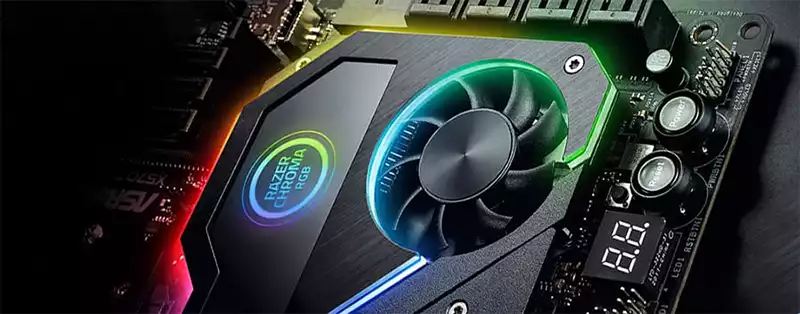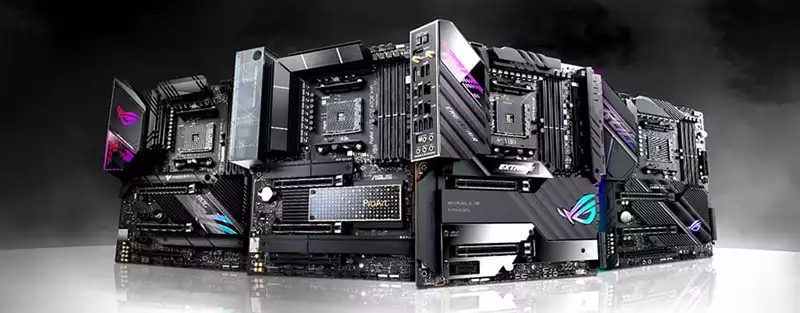You can also be interested in these:
- Who leads the battle of the CPUs in 2023?
- AMD Ryzen 9 7950X3D CPU full review
- AMD Zen 3 vs Zen 4: The evolution and revolution
- AMD Ryzen 7000X3D: What to expect from these new CPUs?
If you are a “Red team” fan, and are thinking of buying an AMD Ryzen 5000, you might be considering the differences between the X570 vs X570S AMD AM4 chipsets. In reality, there are no huge differences, but one of the key features that set both chipset models apart is the cooling system, which is extremely important for overclocking. In this article we are going to tackle all those main differences to help you take a more educated decision when it comes to getting your AMD AM4 chipset.

The X570 chipset was released a long time ago and it brought a solid platform with PCI-Express 4.0, high frequency DDR4, many M2 slots and substantial improvements. However, there were temperature issues that forced MSI, Gigabyte, Asus, and ASRock to implement an active fan to cool the entire PCB and chips. With the arrival of X570S all these improvements are not longer needed, but is it worth the investment? Are we really getting that much for our hard-earned money buying a chipset model almost identical in features to its former?
AMD X570 vs X570S: active or passive cooling
The AMD X570 chipset, was focused on desktop platform and for enthusiasts having a Ryzen 5000 or 3000. It was presented as the introductory step into PCI-Express 4.0 support in all its glory. However, the X470 chipset already came with PCIe 4.0 compatibility.
This is something that is worth mentioning because the X570 was the first AMD chipset that added the extra PCIe 4.0 lane support at its core directly hosted by the CPU, for the Ryzen 3000 CPUs compliant with PCIe 4.0. The result is that the Ryzen 3000 and X570 used PCI-Express 4.0 to communicate with each other, which is an improvement over the X470.
On the other hand, another important improvement was the support with USB 3.1 Gen 2 (8 ports) and the possibility for manufacturers to flexibly work with 12 PCIe 4.0 lanes: SATA, PCIe 4.0 x1 slots, 3 M2 SSD PCIe 4.0 slots, etc. We also saw a leap in advancement in terms of the TDP of the chipset, choosing 11W as the native support for 3,200 MHz in the RAM memories.

Those 11W caused an extra load in the cooling performance of the X570 motherboards, so the solution was to incorporate a fan that actively cools the chipset. This solution brought with it another problem: The fan, although small in size, was generating too much noise.
AMD never announced the X570S chipset officially. Neither you will be able to find its specifications on the web. However, all of a sudden, manufacturers started to release X570S compatible motherboards. What was the difference? That “S” refers to “Silent” because they incorporate passive cooling (aluminum heatsinks, mostly).
This way AMD managed to solve this issue and restore the “silence” back on its CPU chipset. In short, all the specifications are the same on the X570S vs X570, therefore it is understandable from a marketing standpoint why AMD hasn’t released any statements clarifying this.
Advantages and disadvantages
Now let see what the advantages and disadvantages on the C570 vs X570S AMD chipsets would be. Is the idea of “a new model S” valuable enough to justify its purchase? Let’s evaluate this:
Sale price
The AMD X570 boards have passed their maturity stage in the market, and therefore have a more comprehensive price point, despite having an additional element (the fan) in comparison with the X570S.
Unless you are stressed or bothered by the noise (which is really marginal) from the motherboard fans, it doesn’t make much sense to go with the X570S motherboard paying the extra cost for it.
X570 vs X570S: Platform Life
With the introduction of the Ryzen 7000 series, AMD will be implementing its new AM5 socket, with a series of improvements in PCI-Express and in DDR5. This launch will signify a point of no return for the X570 platform, which denotes we are reaching the end of the line for them. Ryzen 5000 will be the last chips with AM4 support on desktop.
Taking these considerations into account, will you spend more money for a platform that is far from innovative, and in fact, is seeing its death just around the corner? The Z690 chipset is readily available, and it has PCIe 5.0 and DDR5 support. Seeing these things happening in the market makes you want to hold on even harder to those “old” models that still perform well despite their apparent limitations.
Same chipset specs
We don’t have much to say here. As we already touched on, both models, the X570 and X570S have the exact same chipset specifications. Now the question is, will you pay more for one that the only advancement is the lack of a cooling fan? The choice is yours.
X570S’ Lack of model variability
If we examine the X570 chipset value proposition and selling points on the market, we will see it has a lot more to offer versus the X570S. We talked about how this AMD chipset has a lot more time in the market, and with this, comes the variability. More manufacturers integrate even more variations in the model, giving us a lo more freedom of choice and competitive price range.

You won’t find many AMD X570S boards in the market. Due to the AMD change of gears towards AM5, the Intel’s Z690 on the horizon and the potential death of the chipset, manufacturers are not that attracted to keep producing these anymore.
Most X570S models are being sold as premium products because the vast majority of motherboards cost more than $560 USD, even reaching sky-high prices as $1000 USD. I guess, after these considerations we are more prepared for the future.
Conclusions about x570 vs x570s
Having said there are not tangible differences between X570 vs X570S, other than the cooling system, it is up to you to opt for one or another. Sometimes the availability will determine this decision but having all these considerations on the back of your head will help you take the right choice at the end of the day.
There are a few people who think that X570S is a rehash of the X570 because it is based on the same specifications. More than a rehash, they see it as a superior version of this chipset that improves “the main bug”: cooling. Actually, this is not the case.
Should they have released the X570S initially? We believe this should have happened; it is completely safe to say. However, technology advances at a really fast pace and no one can predict the future. The X570 boards have been on the market since July 2019, while the X570S appeared in 2021. This leaves a short threshold for the latter.
More than 2 years have passed between the launch of one and the other, so a simple improvement in the cooling and sound might not be the greatest improvements.
More stories like this
- Who leads the battle of the CPUs in 2023?
- AMD Ryzen 9 7950X3D CPU full review
- AMD Zen 3 vs Zen 4: The evolution and revolution
- AMD Ryzen 7000X3D: What to expect from these new CPUs?
- All about the AMD Ryzen 7 5800X3D processor
- Intel B660 vs Z690, which is worth your investment?